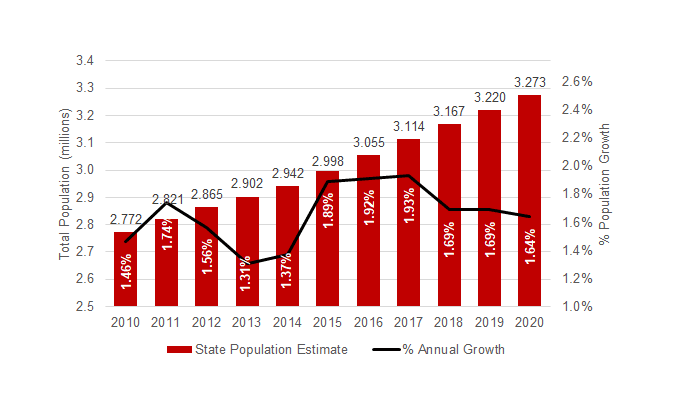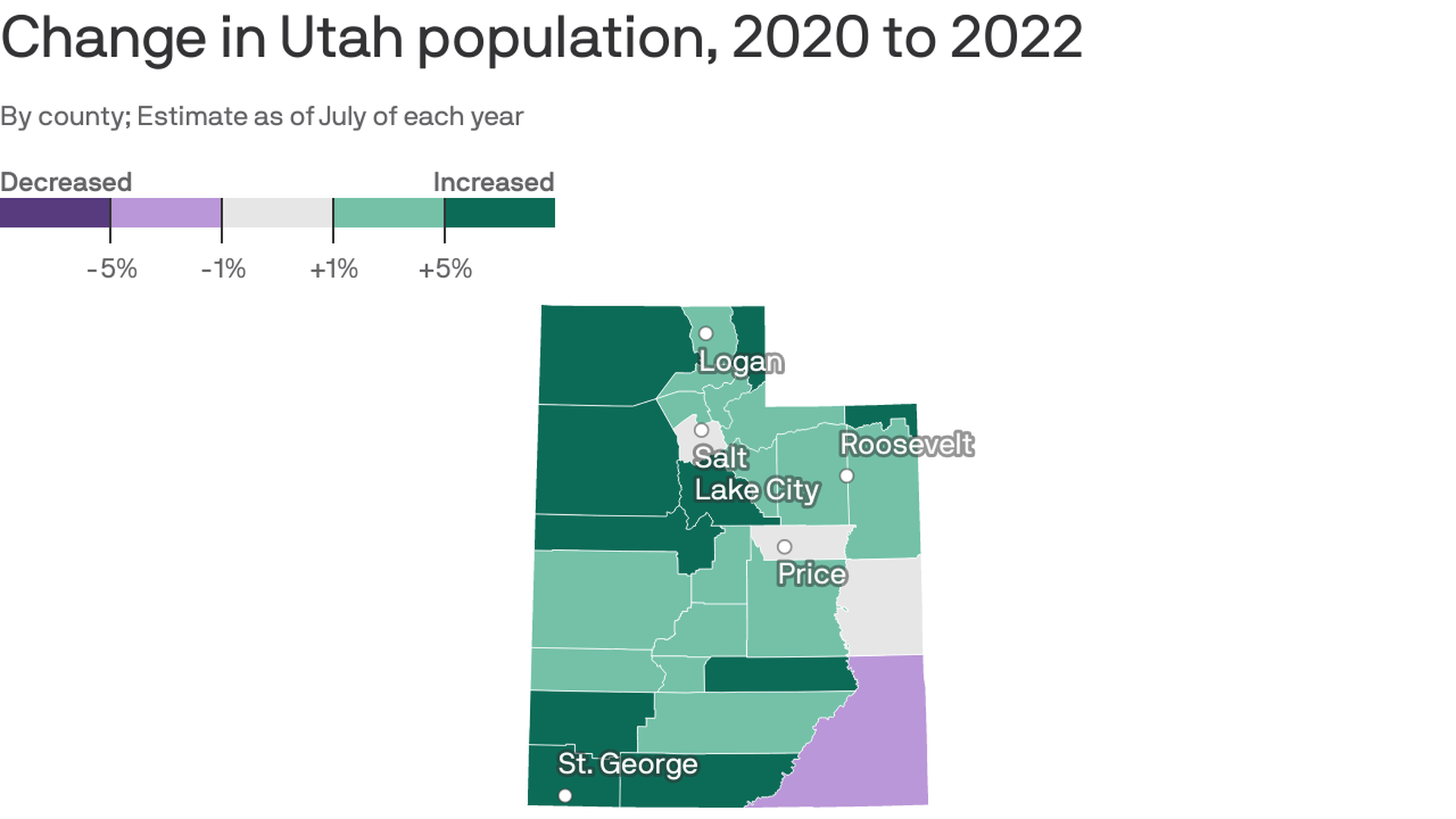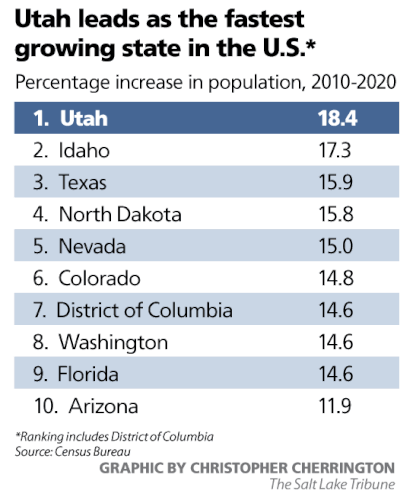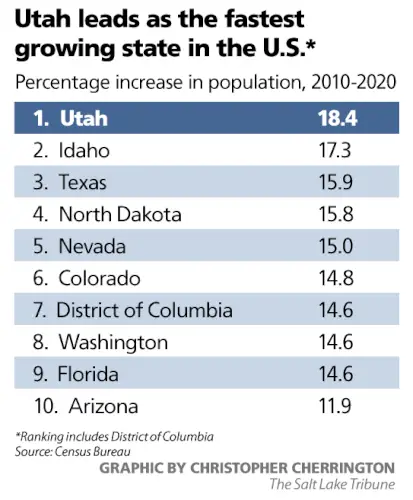Utah’s population continues to grow steadily every year, with a current population of 3.2 million people. Living off the grid is generally allowed in remote areas of Utah, but some regions require connection to the municipal sewer system. The state experiences all four seasons, with hot, dry summers and cold winters. Although Utah is known for the Great Salt Lake, the water is salty and polluted, limiting fish populations. Off grid living is possible in Utah, but finding suitable land may be challenging due to the desert landscapes. However, the state does have rivers and mountains that provide relief from the arid climate. It’s important to note that Utah has a high number of people with melanoma, so sunscreen is recommended. The state is known for growing crops such as barley, wheat, and maize, as well as fruits like apples, cherries, and peaches. Rainwater harvesting is legal in Utah, although water availability may be limited in certain areas. Utah also boasts a diverse wildlife population, including elk, moose, and various fish species. Solar power is a recommended option for generating off grid power, with incentives available. While Utah has good road access, caution is advised while driving. Land prices in the state are relatively cheap, especially in desert areas, and property taxes are lower than the national average. However, the cost of living in Utah is slightly higher than the national average, primarily due to housing costs in urban areas. Despite these factors, Utah has a low crime rate, although there have historically been cults in the state. Natural disasters such as floods, earthquakes, wildfires, and heatwaves are common occurrences, with heatwaves being especially prevalent. While Alaska is considered the easiest state to live off the grid, Park City is seen as a good place for off grid living in Utah.

Utah’s Population Growth
Utah’s population is currently 3.2 million and is steadily growing year after year. The state has seen a significant increase in population over the past few decades, and this trend is expected to continue. The growth can be attributed to factors such as job opportunities, quality of life, and a strong economy. With a diverse population and a thriving community, Utah is an attractive place to live for many individuals and families.
Living off the Grid in Utah
Living off the grid is generally allowed in remote areas of Utah. This means that individuals who prefer a self-sufficient lifestyle can find solace in the state’s vast, untouched lands. However, it is important to note that some regions in Utah may require residents to connect to the municipal sewer system. This requirement ensures that waste management is properly regulated and maintains the cleanliness of the area.

Climate in Utah
Utah experiences distinct four seasons, offering a variety of weather conditions throughout the year. In the summer, temperatures can soar, and the state often experiences hot and dry weather. It is essential to stay hydrated and take necessary precautions during this time. Winters in Utah can be cold, with temperatures dropping below freezing. Snowfall is common, creating a picturesque winter wonderland.
Great Salt Lake
Utah is famous for its Great Salt Lake, which is the largest saltwater lake in the Western Hemisphere. However, the water in the lake is salty and polluted, limiting its usability for recreational activities such as swimming. The lake also has a limited fish population due to the high salt content. While the Great Salt Lake offers unique and beautiful landscapes, it is important to be mindful of the water conditions.

Challenges of Off Grid Living in Utah
One of the challenges of off-grid living in Utah is finding suitable land. The state’s desert landscapes make it difficult to find areas with the necessary resources for sustaining an off-grid lifestyle. Additionally, access to water sources can be limited in certain regions, requiring individuals to carefully plan their water usage and storage. Nonetheless, with proper research and planning, it is still possible to find suitable off-grid locations in Utah.
Geographic Features of Utah
Utah boasts a diverse range of geographic features, including rivers and mountains. These natural features provide relief from the arid climate and offer opportunities for outdoor activities such as hiking, fishing, and camping. The rivers in Utah are a valuable water resource and support the natural ecosystem. The mountains, on the other hand, offer breathtaking views and serve as a backdrop to Utah’s landscapes.

Health Concerns in Utah
One health concern in Utah is the high incidence of melanoma, a type of skin cancer. This can be attributed to the state’s sunny climate and the abundance of outdoor recreational activities. It is essential for residents to prioritize sun protection by using sunscreen, wearing protective clothing, and seeking shade when necessary. Taking precautions against sun exposure can help minimize the risk of developing skin cancer.
Agriculture in Utah
Utah’s agriculture industry is diverse and contributes to the state’s economy. Common crops grown in Utah include barley, wheat, and maize. These crops play a vital role in the production of various food products and contribute to food security in the state. In addition to staple crops, Utah also has a thriving fruit industry, with apples, cherries, and peaches being among the popular fruits grown in the state.

Water Availability in Utah
Rainwater harvesting is legal in Utah, providing an opportunity for residents to collect and utilize rainwater for their off-grid needs. However, it is important to note that water availability may be limited in certain areas of the state. As a result, individuals living off the grid in Utah will need to carefully manage their water usage and explore alternative methods for obtaining water, such as drilling wells or utilizing water catchment systems.
Comparison to Alaska and Park City
While Utah offers opportunities for off-grid living, it is worth noting that Alaska is often considered the easiest state for off-grid living. The vast and remote landscapes of Alaska provide ample space for individuals seeking a self-sufficient lifestyle. Additionally, the abundance of natural resources and renewable energy options make Alaska an ideal destination for off-grid enthusiasts.
If you prefer a milder climate and would like to stay within Utah, Park City is often suggested as a good location for off-grid living. Situated in the Wasatch Range, Park City offers stunning mountain views and a range of outdoor recreational activities. The town has a supportive community, making it easier for individuals to navigate the challenges of off-grid living. Whether you choose Alaska or Park City, both options provide a unique off-grid experience in their respective locations.
In conclusion, Utah’s population growth, distinct climate, natural features, and agriculture industry make it an attractive destination for off-grid living. While there may be challenges such as finding suitable land and managing water availability, with careful planning and research, off-grid enthusiasts can find their ideal spot in Utah. Whether you choose to explore the remote regions of the state or settle in Park City, Utah offers a unique and rewarding off-grid living experience.




